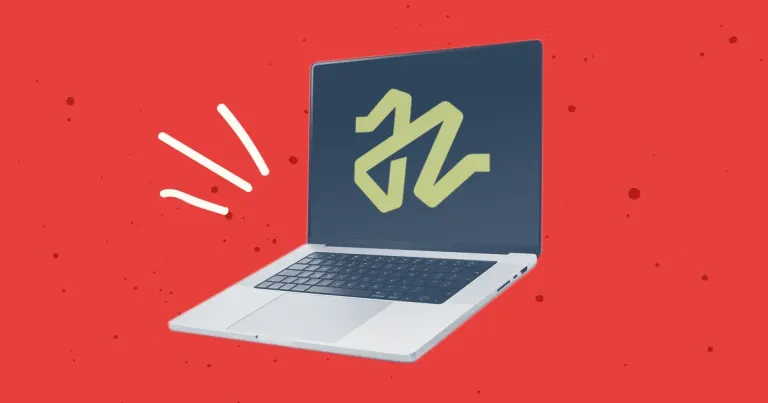
Discontinuing CP Filters for Craft CMS Commercial Plugin Sales
We’ve discontinued CP Filters for Craft CMS 5. Lab Reports and Link Vault will be updated. We still use Craft, and want to focus on creating great websites for our clients.

On April 1, 2016, I wrote a blog post celebrating that fact that Masuga has been in business for 10 years. That’s great news for any small business, but writing that post wasn’t all sunshine and rainbows. The fact is, 2016 has been a less than stellar year for us so far, so I wasn't in the best mood when I wrote the anniversary post. Starting in late 2015, a “perfect lull” in project work started…and it is something that I don’t ever want to experience again.
This is a tough post to write, because I’d rather be writing about something more positive, but our reality simply doesn’t align with where I thought things would be for us right now. I’m writing it anyway, for a few reasons:
Here’s what we’ve learned from our experience of the past 6-7 months, and what we’re doing to “right the ship” so that we never, ever, go through such a slow period again.
In January 2016 I realized that we had a business problem. In fact, this was one of the worst starts to a new year I can remember. Looking back even further, this is one of the worst 7-month stretches we have ever had in 10 years of business. How could this be when at the same time, we relaunched our website and brand? We must have been doing amazingly well, right? It would seem so, at least on the surface.
Since 2009, our business has been supported (perhaps “spoiled”?) by running devot-ee.com, an online marketplace for a niche content management system (ExpressionEngine), which subsidized everything else we did. If we had a bad month or two on the client side, I never noticed because of the store.
But marketplaces are volatile. You’re nothing but a person-in-the-middle, and you don’t have a ton of control over your destiny. Sellers can leave for whatever reason, and buyers can go elsewhere, and forget about it if both things happen at once! The marketplace doesn’t do the same level of business it did a few years ago, so, OK, fine…things change, so let’s see what else we can do. That led me to take a closer look at our client services and how we could grow that area.
When I saw monthly revenue starting to shrink, I knew I had to look at our monthly spend first. I wanted to do this in a systematic way, so I implemented Profit First for the business. I’d seen some peers reference the book, so I thought I’d give it a read. I was certain any book with a tagline that reads “A Simple System To Transform Any Business From A Cash-Eating Monster To A Money-Making Machine” was something I should at least take a look at. The formula is simple: Sales – Profit = Expenses. Take your profit out first, and whatever is left over you can spend on the business.
The Profit First system made a lot of sense to me, and I started implementing the changes immediately: I started by slashing numerous monthly services that we didn’t need. Next, I backed out of a nearly-finalized deal to move into a larger office in order to move into a smaller place that will save us hundreds of dollars a month. I nuked that office deal at the last minute, even after having spent over 8 months searching for a new office space. It ticked some people off, but it was a tough call that had to be made. We couldn’t have afforded the new, larger office. We also didn’t need it. If the business isn’t profitable, what are we doing getting a bigger, fancier space? I also downsized staff (this was the toughest move, but had to be done). Profit First has been one of the toughest things I’ve ever done related to the business - but I think it has been very valuable, and I wish I had known about it years ago. It really opened my eyes to our expenses and profit margins.
That was a start.
I knew Profit First slash-and-burn was only fixing the current situation, but not the problem. The problem is: we need more clients giving us more (and better) work, right now, and no one knows we’re here. No one knows how we can help them. Outside of a couple very small niche CMS circles, no one has any clue who we are. It actually didn’t help us to rebrand and relaunch because part of that move involved changing our domain from masugadesign.com to gomasuga.com. Even though I think removing “design” was a good long-term goal (it isn’t the only or even primary thing we do), we essentially lost whatever search clout we had. Now we were practically invisible.
We needed to reach more people. And not just anybody–we needed to get in front of more qualified leads, immediately.
What dawned on me then is that we didn’t have a sales funnel - or even any specific way to reach more people to get more sales. We’d hardly ever advertised or really marketed ourselves, and I came to realize that we basically do not exist. We had too few clients, and we had a concentration in too few of the ones we did have, and we didn’t have enough recurring revenue in place. This combination was proving to be lethal. To recap, the following triple-threat is not optimal, and if this looks like your business, I would advise you to fix this ASAP:
The wheel of fortune started turning and began to crush us in late 2015. The work for a few of our top clients (those that typically provide us a lot to do each month) happened to simultaneously slow down.
This went on for a month. “Heh, light month, eh?”
Before I know it, 3 months went by. “Well, this is interesting.”
Then another month or two. “You’re sure none of those ‘on hold’ projects can get started?”
Then another month. “I…haven’t seen this before. Back to the drawing board!”
And here we are.
There were quite a few potential projects out there, both from existing clients and new prospects. The thinking is always, “gee, if all those dropped at once, we’d have to work 80 hour weeks all of a sudden!” But now more than ever, I realize “potential” means nothing. Potential doesn’t keep lights on. Projects that “start around May” or are “very likely happening” or are “totally happening, but we don’t know when” or are “picking up in June” or are “waiting on the designer” are as good as non-existent. What would happen if we were no longer here by the time those projects ever really came around? Well, that would be terrible for everyone involved.
It wasn’t like we had nothing to do, but we clearly did not have enough to do. It became painfully clear how tenuous the business was. Our month to month was highly volatile, but we’d been “lucky” for so long, I didn’t see it before now.
Whatever “luck” we had been running on for years had seemingly run out. We needed to make our own luck now, and get in front of more potential clients, quickly. We needed to change things up.
A positive way for me to look at the situation is: if we’ve done pretty well and “gotten by” over the past few years without really trying (in other words, without having a true sales funnel or pounding pavement at all) what will we be able to accomplish if we do get a reliable method in place, and improve our ability to reach out, and to close?
I started connecting with people on LinkedIn. I went from around 100 connections to over 470 within a few months. Turns out I actually know quite a few people, but I had barely ever leveraged the power and reach of my own network. We started emailing past clients, and clients that were still “clients” but for whom we hadn’t done any work in a while. We asked if we could help add value. We asked for referrals. We asked to meet. I pounded the pavement harder over then span of a few weeks than I had ever done in the previous 10 years. I’m now meeting with people every week, and having more phone calls than ever, but sales don’t happen overnight. Sometimes you need a lot of “touches” to get the the point where someone actually gives you a dollar, but at least we’re now on track with numerous prospects.
We didn’t have a big budget to spend on traditional marketing like AdWords or Facebook ads (but we did do a small AdWords spend every month), so I kept researching online advertising and discovered the idea of “inbound marketing.” Inbound marketing refers to marketing activities that attract visitors, rather than relying on traditional “spray and pray” type advertising, where you hope (and pay) for clicks (the AdWords or display ad stuff).
Inbound marketing earns customer attention, makes it easier to be found (naturally), and draws customers to your website because you produce useful, interesting content. Inbound is not necessarily a new idea–the jist is that if you make good content, people will come to you by searching for that content. So you write content that attracts the type of people you want to attract–your ideal clients. Attract, convert, close, delight, repeat. Seems relatively simple, right? But it’s hard work, because you first have to determine exactly who you’re talking to (very specifically) and then bang out content to them like 700 possessed monkeys, covering every long-tail keyword for which you want to be found while targeting each stage of their “buyer’s journey” (whew…pause, take a breath). Might be hard to start researching keywords, buyer personas, and banging out content, but at least it doesn’t cost us $15 a click.
You can’t research inbound marketing for long before you discover HubSpot, who practically owns the idea. They have probably the most well-known, respected, and complete marketing automation platform available. I spent an entire weekend researching them, as well as other marketing automation services like Marketo, as well as whatever we could potentially piece together to create an actual sales process. HubSpot is so confident in their product, they even wrote (attracted?) me to an article they wrote about how to piece together your own HubSpot alternative, if you dare: the FrankenSpot.
I kept coming back to HubSpot, though. There’s no doubt that HubSpot is expensive, but I felt they gave us the greatest opportunity to help us attract the best, most qualified leads, and to track all that information in once place. So, despite our revenue woes, I made a bet and decided to go with HubSpot, the most expensive option. We now had a marketing automation platform that could help us in our efforts to attract and convert the right type of clients. I became “HubSpot Inbound Certified” and we started working towards making Masuga a certified HubSpot Partner.
At this point I’d started broadening my network, reaching out to people like a true salesperson, and we adopted a marketing automation platform and started implementing an inbound marketing methodology.
Now I wondered: what else could we offer? We’ve spent time talking internally about providing different services for customers with smaller budgets (is WordPress really so bad?), creating and producing products related to my book on ExpressionEngine development (or our development expertise in general) such as courses or webinars, and so on. We’re still talking through what some of these new services and offerings might be.
So, to right the ship we’ve arrived at four main solutions that should help us out. Some we’ve done, some are in progress, and some we will do. The four things are:
Whew. That feels better. The world isn’t ending. We’re just experiencing an unusual downtime that we hadn’t experienced before, and trying to learn from it as much as we can. We just need to make the necessary changes to make sure we’re never standing still or moving backwards.
Do you have a web services business like ours? Have you ever heard of (or tried using) the Profit First method? How have you implemented and sold recurring engagements to help even out the peaks and valleys that result in lean times? What do you do when you experience a lull in client work? I’d love to hear your feedback. Tweet @masuga or @gomasuga or leave a comment on Facebook. I'd appreciate it if you shared this article with anyone you think might benefit from it.
Now, back to trying to close on some new development projects with a few qualified leads.
(The HubSpot decision was a big one for me, and I know it might be useful to other small businesses to know about our experiences with it, so we wrote about our experience (mistake?) with it in two other blog posts: Masuga’s Expensive Mistake: Our HubSpot Inbound Marketing Experiment (Part 1) and Masuga’s Expensive Mistake: Our HubSpot Inbound Marketing Experiment (Part 2).)
We’ve discontinued CP Filters for Craft CMS 5. Lab Reports and Link Vault will be updated. We still use Craft, and want to focus on creating great websites for our clients.
Shopify's Dawn theme homepage may get an SEO warning for an empty h1 header element. This is a missed opportunity to help search engines understand what your page is about. Small edits to the theme code can fix this technical SEO issue.
Shopify's default Dawn theme displays empty alt tags for collection images. This post explains how to fix blank alt tags for Shopify collection images to improve your Shopify store's accessibility and SEO.


